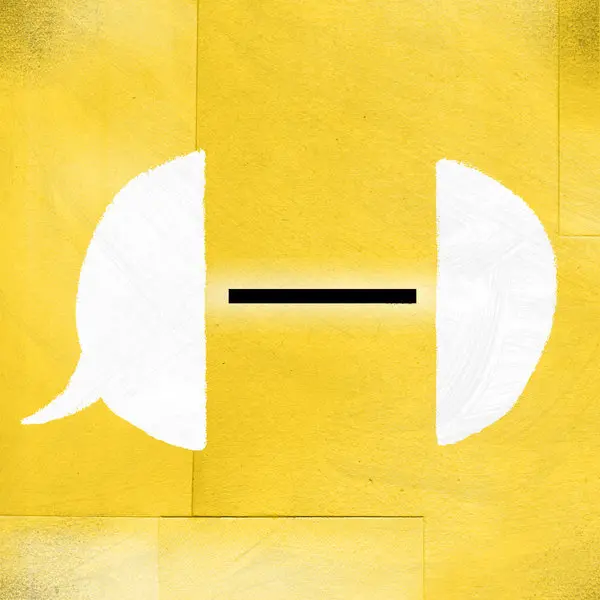
A few weeks ago the Observer columnist and internet technology expert John Naughton – one of the few columnists left who’s still worth reading after the Guardian carelessly disowned its Sunday sister – wrote a fascinating article – fascinating to a nerd like me, at least – about that chameleon of punctuation, the dash, or rather, as he more correctly called it, the ‘em-dash’ – a line with the width of the letter ‘m’. That’s not, by the way, the same as the ‘hyphen’, which is a short line used to link the two halves of a word – or the shorter ‘en-dash’ (the width of the letter ‘n’).
Naughton’s article was stimulated by the finding – by some hyper-observant students of AI behaviour – that the artificial text generated by Large Language Models (LLMs) tends to include an unexpectedly high number of em-dashes. The implication was that the dashes resulted from some programming quirk of the AI system’s software. Their presence, according to this theory, gave the game away – they demonstrated that the text was indeed the product of a machine and not a human. They were, in other words, a new kind of Turing test.

Naughton’s view, though, was that the proliferation of dashes, far from being an AI invention, simply reflects the fact that real authors – that is, run-of-the-mill authors, not academic writers who carefully ration their punctuation to gain top marks in the Research Excellence stakes – actually use dashes a good deal. That seems a common-sense explanation. All that LLMs do, after all, is regurgitate – admittedly using amazingly sophisticated probabilistic logic – the words and associated punctuation fed to them in such huge quantities from pre-existing writings – with zero concern, of course, for copyright law and the rights of flesh-and blood-authors.

So why is the em-dash so favoured by so many writers? Well, John Naughton hits the nail on the head with two words: ‘very versatile’. Most punctuation marks are ‘hard’ – they resemble police officers enforcing the piece of law. The full stop is just that, a definitive end to an utterance – it’s where a sentence, as it were, is brought to die. You’d use a colon to introduce a list of things or a consequent thought – that’s just about its sole function – and it’s not easy to use it twice in the same sentence. Question marks and explanation marks are equally brutal and single-function. Admittedly, the semicolon can be a bit softer – less definite than a full stop, it marks a pause rather than a break, and can link two elements in a sentence in a fairly slack way. But none of these has anything approaching the multifunctionality – the versatility – of the dash.

The dash can do so many things. It can replace parentheses. Your eye can easily skip over what’s corralled within two brackets – their contents seem to say ‘I’m not important, only read me if you must’ – but it’s tempted to linger over words bounded by two dashes. It can replace the colon and its thumping obviousness. It can signal a quick elision of thought – a darting movement rather than the deliberate tread of a comma or semicolon. Or, at the end of a long, sonorous sentence, maybe one with many subordinate clauses – it can supply a quiet coda. It might indicate a hesitation or interruption – or self-interruption – a silence that the reader might try to fill. Or an act of censorship, as when a writer identifies a character only by an initial, as in ‘D –’. Some authors – James Joyce in Ulysses is a good example – use a dash, instead of quotation marks, to introduce speech.

Other literary authors loved the dash. The first writer to come to mind is Emily Dickinson, who used the dash almost to the exclusion of other punctuation marks. That fine poet Nigel Jenkins (1949-2014) has a different, more sinister take on the dash. In 2006 he published a series of ‘punctuation poems’, and included one entitled ‘Dash’. His dash is a long way from being the writer’s friendly and jovial companion. Rather, Dash comes with a dark cloak and scythe in hand:
I am – you’ve noticed – the great
disruptor: there’s a violence in me
that can stem – at a stroke –
a river’s flow.Mistake me not
for the frenzied penman’s
dash-of-all-trades
nor for my wee, hyphenating cousin.
I may seem, sometimes, a cheery joinerbut disconnection if not erasure’s
my line. I have only to unite
– nineteen-forty-nine DASH –
– your first date with your lastto write you out.
Though it may please you all
to call me dash,
I am not, if need be,
incapable of patience.
My own use of em-dashes, I must admit, has increased over the years – to the extent that the habit may be becoming out of hand. It’s a comfort, though, to know that I’ve a long way to go before I reach the kind of dash addiction suffered by its greatest exponent, Laurence Sterne.
Sterne’s dashes – em-dashes, but also much longer dashes, or entire batteries of dashes, or dashes mixed with other marks – are immediately obvious to anyone coming to Tristram Shandy for the first time. They’re ubiquitous – and you either have to acknowledge and admire them – or give up and move back to a more conventional novelist.

The basic reason why Sterne is a such a dashing writer is that he’s trying to reproduce in words on paper the passing thought – and often speech – patterns of Tristram, as he tries – with increasing failure and hopelessness – to give us his ‘life and opinions’. The dash is a crucial tool in conveying the swift associations of thought – Sterne invokes John Locke in attempting to theorise the process – that flash across the synapses of Tristram’s brain. Successions of multiple dashes suggest the extreme rapidity of thought. They also show how easily Tristram can be led astray into digression – which of course just adds to the impossibility of completing his story (he doesn’t get as far as his own birth till Volume 3). Sterne’s most extreme use of dashes is when Phutatorius, a church lawyer, realises that hot chestnuts have fallen from the table, through a ‘particular aperture’ in his breeches, and into collision with his own ‘nuts’: here we get an entire two lines of dashes.

Someone counted the number of dashes in Tristram Shandy and reckoned there were 9,560 of them, an average of one dash every three lines. T.C. Livingstone summed up Sterne’s use of the dash perfectly:
The celebrated Shandean dash … conveys in a typographical gesture the changes of tone, the confidences, the implicatory silences, the veerings of the narrative, the doubling of meaning, which characterise Sterne’s methods as a writer.

Leave a Reply